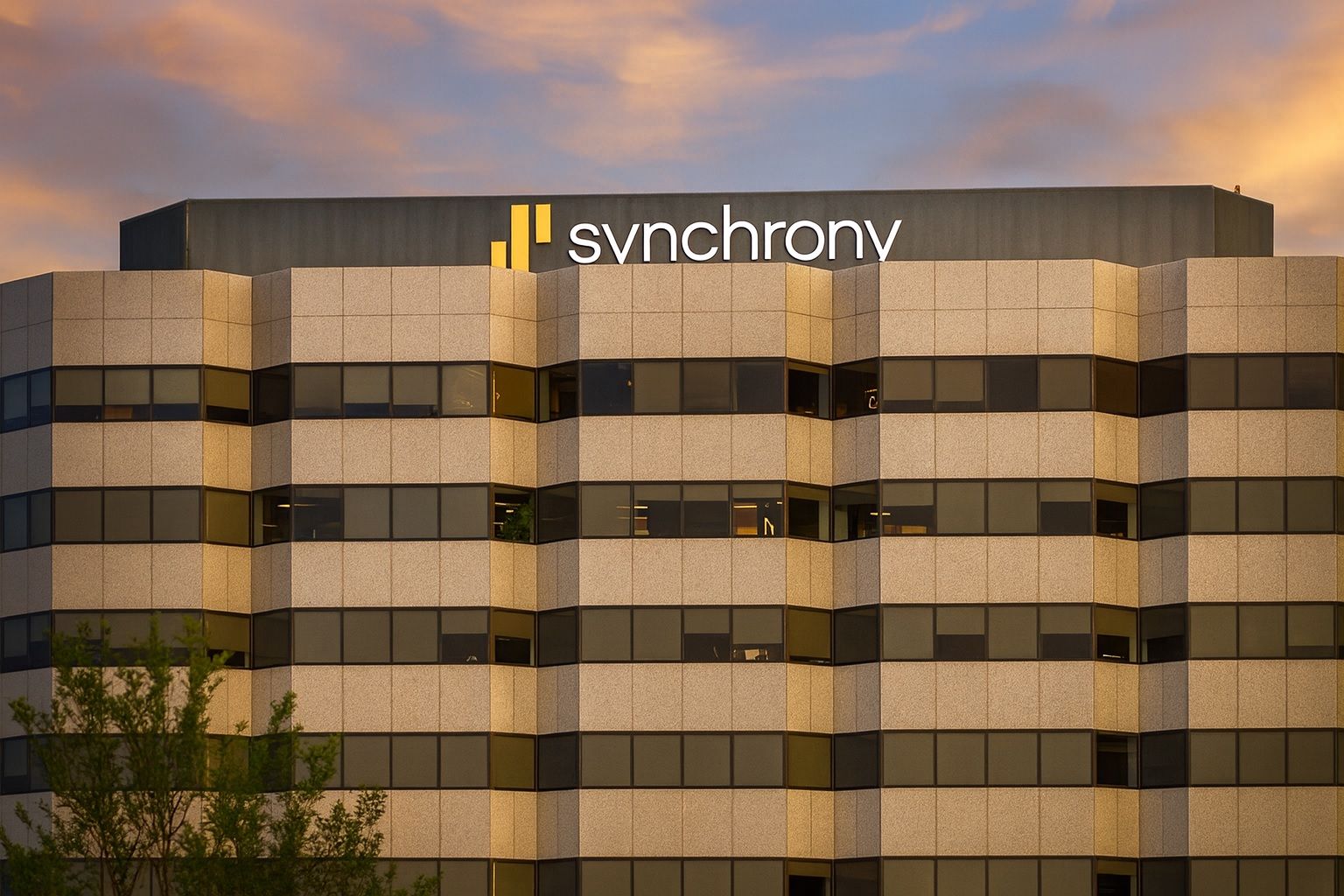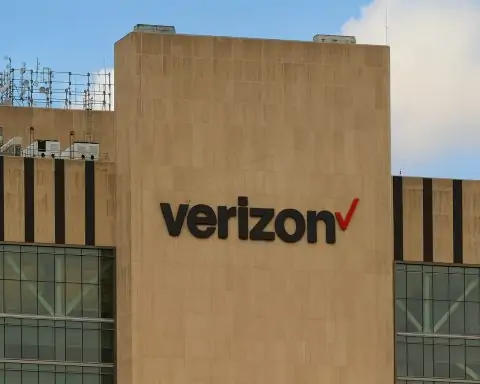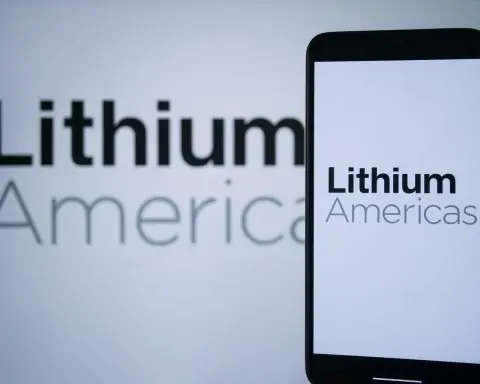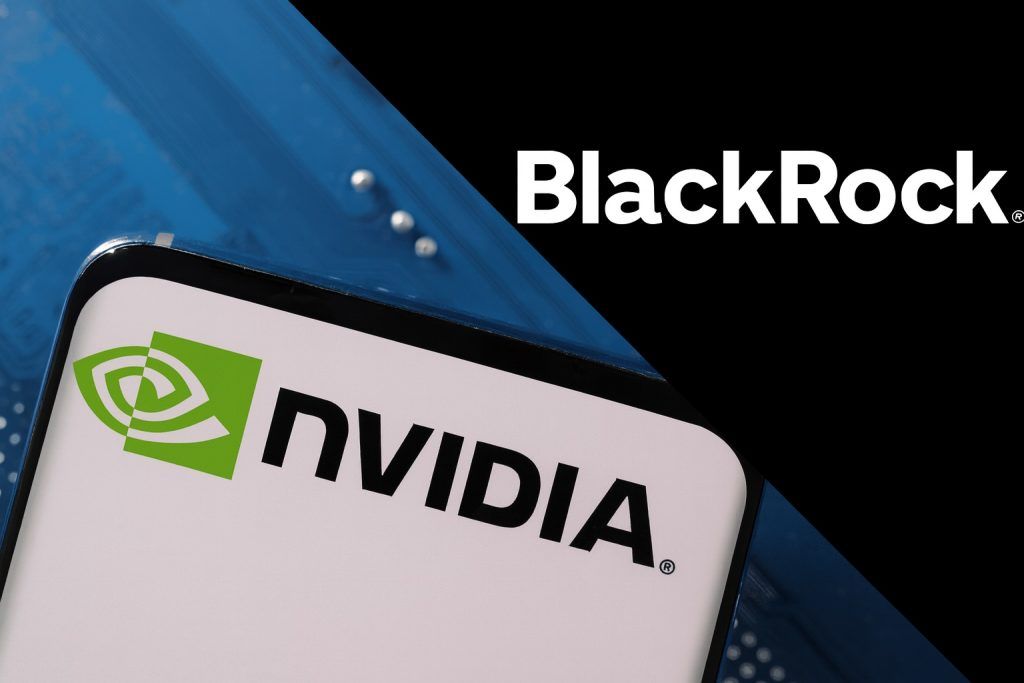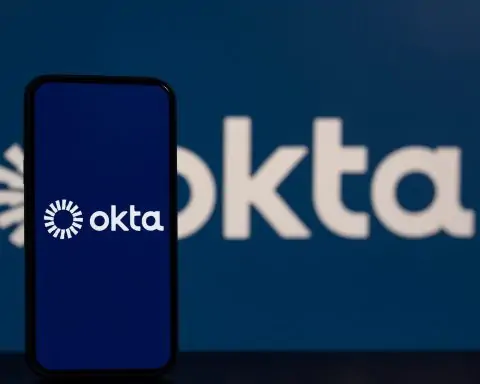- Price (Oct 15, 2025): around $73 per share (up modestly for the week) [1]. Shares have gained roughly 12% year-to-date on broad consumer-lending strength [2].
- Q3 Results: EPS $2.86 vs. $2.22 expected (37% jump YoY); revenue ~$4.7B vs. ~$4.69B est [3] [4]. Net interest income rose ~2% to $4.72B, driven by steady consumer spending [5] [6]. Purchase volume grew ~2% to $46B, fueling a net interest margin ~15.6% (up ~58bp) [7] [8].
- Credit Quality: Credit performance improved. Net charge-offs fell ~90bp to 5.16%, and provisions for loan losses were cut ~28% YoY to $1.15B, reflecting reserve releases [9] [10]. Delinquencies also eased (30+ days past due down 39bp) [11].
- Capital & Returns: Book value per share +16% YoY to ~$44; strong capital ratios (Tier-1 ~13%) [12]. Board increased buyback by $1.0B (to $2.1B total through mid-2026) and declared a $0.30 quarterly dividend (≈1.7% yield) [13] [14]. Management returned ~$970M in Q3 to shareholders via buybacks/dividends [15].
- Guidance: FY2025 revenue was trimmed slightly (to $15.0–15.1B, below prior $15.3B est), and loan receivables expected to be roughly flat as high payments offset volume growth [16]. NIM is projected ~15.7% for H2, aided by easing funding costs [17]. Management cautioned on macro risks (inflation, rate shifts, tariffs, potential U.S. govt shutdown) and the recent CFPB late-fee rule reversal [18].
- Analysts: Wall Street consensus is a “Moderate Buy” with a median 12-month target near $77–82 [19] [20]. Several firms have raised targets: e.g., JMP Securities to $88 (market outperform) and Morgan Stanley to $82 (equal weight) in September [21]. About two-thirds of analysts rate SYF “buy” or better [22].
- Industry Context: Credit card issuers like Synchrony are benefiting from high loan rates and resilient consumer spending [23] [24]. American card APRs remain much higher than mortgages/auto loans, bolstering interest income across the sector [25]. Broadly, retail finance is growing (e.g. Walmart’s One fintech arm is launching new credit cards with Synchrony in late 2025 [26]). Regulators recently backed off a cap on late fees – a win for issuers – when a court vacated the CFPB’s late-fee rule in April 2025 [27].
Synchrony Financial’s stock has rallied on these strong fundamentals. After closing near $72.84 on Oct. 14, shares ticked up in early trading on Oct. 15 (around $74) as investors digested the blowout results [28] [29]. The company’s Q3 beat was driven by tighter credit management and robust online spending, giving shareholders confidence. “Synchrony’s third-quarter performance was highlighted by a return to purchase volume growth… and continued strength in our credit performance,” said CEO Brian Doubles [30], echoing industry-wide trends of healthy consumer payments.
The earnings report showed earnings per share of $2.86, well above the $2.22 analysts expected [31] [32]. Revenue of ~$4.7 billion also topped projections. The net interest income – money earned on loans minus deposit costs – climbed 2.4% to $4.72B [33], aided by steady shopping. Synchrony’s net interest margin jumped to ~15.6% from ~15.0% a year earlier [34] [35], reflecting a more profitable lending mix. On the bottom line, net income rose to about $1.08B (vs. $789M last year), a 37% gain [36] [37]. Finimize summed it up: “Synchrony Financial just delivered a knockout third-quarter, posting $1.1 billion in profit — a 37% jump from last year — thanks to tighter credit controls and customers largely keeping up with payments.” [38]
Credit performance was a standout: net charge-offs (bad debt) fell sharply and reserves were reduced. The bank released $152M in reserves this quarter (vs. building $44M last year) [39]. As a result, Synchrony’s provision expense dropped to $1.15B from $1.60B year-over-year. Lower losses meant higher profitability. Delinquencies have also eased (loans 30+ days past due dropped to 4.39% of receivables) [40]. Overall, return on equity climbed to ~25%, one of the highest in the industry [41]. The strong metrics gave management confidence to reward shareholders: the board added a $1B buyback (raising total authorized to $2.1B) [42] [43].
In terms of stock outlook, analysts point out that SYF trades at under 9x forward earnings – cheap by historical standards for a healthy bank. Many see room to run. JMP’s recent “market outperform” call to $88 suggests the stock could move higher. The average target (~$77.50) implies ~6-7% upside from current levels [44]. As Finimize noted, “Shares are currently trading at just eight times next year’s expected earnings… The $82.50 median 12-month target points to further room for growth, as markets reward Synchrony’s resilience” [45].
Broader context: Synchrony is a leading retail credit lender (think store-branded credit cards). It partners with hundreds of merchants, including major retailers like Lowe’s (acquiring Lowe’s commercial card portfolio by 2026) and Walmart. For example, Walmart’s One Financial (majority-owned by Walmart) plans to launch two new credit cards – a general-purpose MasterCard and a Walmart store card – via Synchrony in late 2025 [46]. These partnerships help fuel its growth. On the macro side, U.S. consumers have so far kept paying their cards even amid higher rates; delinquency rates have stabilized (around 3% nationally). The Federal Reserve has held rates steady in 2025 but signal cuts may come in 2026, which could lower banks’ funding costs. In the near term, however, high card interest rates (often 20%+) continue to boost Synchrony’s earnings.
Investors should note risks: management highlighted uncertainties like inflation, changing rates, global trade tariffs, and political gridlock (a potential federal shutdown) [47]. Also, new regulation is always possible. Credit bureaus had urged lower late fees, but the recent court decision scrapping the CFPB’s late-fee cap is a win for issuers [48]. On the flip side, a sharper-than-expected economic slowdown could hurt loan demand and consumer credit health.
Bottom line: Synchrony’s shares have climbed on strong Q3 results and a shareholder-friendly strategy. The stock’s fundamental valuation and analyst sentiment suggest cautious optimism: the company is gaining on resilient consumer demand and tightening credit, and analysts largely rate it a buy [49] [50]. For investors watching financials, Synchrony’s mix of high dividends (≈1.7% yield), cheap valuation (~8–9x earnings), and improving credit metrics make it noteworthy. The recent upgrade in buyback authorization and big earnings beat could sustain momentum, barring major economic shocks.
Sources: Financial news and filings (earnings reports on Oct. 15, 2025) [51] [52]; Reuters market reports [53]; analyst and industry commentary [54] [55]; trade press and regulatory updates [56] [57]. These connected sources provide the latest data and expert analysis on SYF stock and its market environment.
References
1. www.reuters.com, 2. www.reuters.com, 3. www.marketbeat.com, 4. tokenist.com, 5. www.reuters.com, 6. tokenist.com, 7. www.reuters.com, 8. www.benzinga.com, 9. www.benzinga.com, 10. finimize.com, 11. www.benzinga.com, 12. www.benzinga.com, 13. www.benzinga.com, 14. www.marketbeat.com, 15. www.benzinga.com, 16. www.benzinga.com, 17. www.benzinga.com, 18. www.benzinga.com, 19. www.marketbeat.com, 20. finimize.com, 21. www.marketbeat.com, 22. www.marketbeat.com, 23. www.reuters.com, 24. finimize.com, 25. www.reuters.com, 26. ts2.tech, 27. bankingjournal.aba.com, 28. www.reuters.com, 29. www.marketbeat.com, 30. www.benzinga.com, 31. www.marketbeat.com, 32. finimize.com, 33. www.reuters.com, 34. www.reuters.com, 35. www.benzinga.com, 36. www.reuters.com, 37. www.benzinga.com, 38. finimize.com, 39. www.benzinga.com, 40. www.benzinga.com, 41. www.benzinga.com, 42. www.benzinga.com, 43. tokenist.com, 44. www.marketbeat.com, 45. finimize.com, 46. ts2.tech, 47. www.benzinga.com, 48. bankingjournal.aba.com, 49. www.marketbeat.com, 50. finimize.com, 51. www.marketbeat.com, 52. www.benzinga.com, 53. www.reuters.com, 54. www.marketbeat.com, 55. finimize.com, 56. bankingjournal.aba.com, 57. ts2.tech
